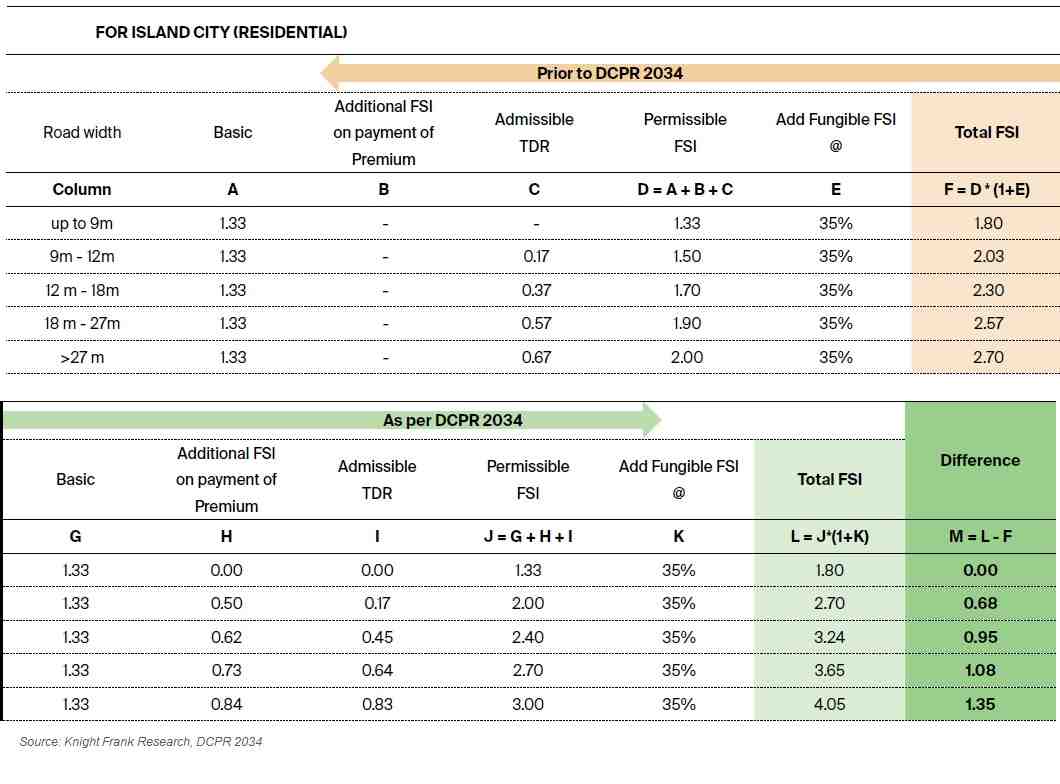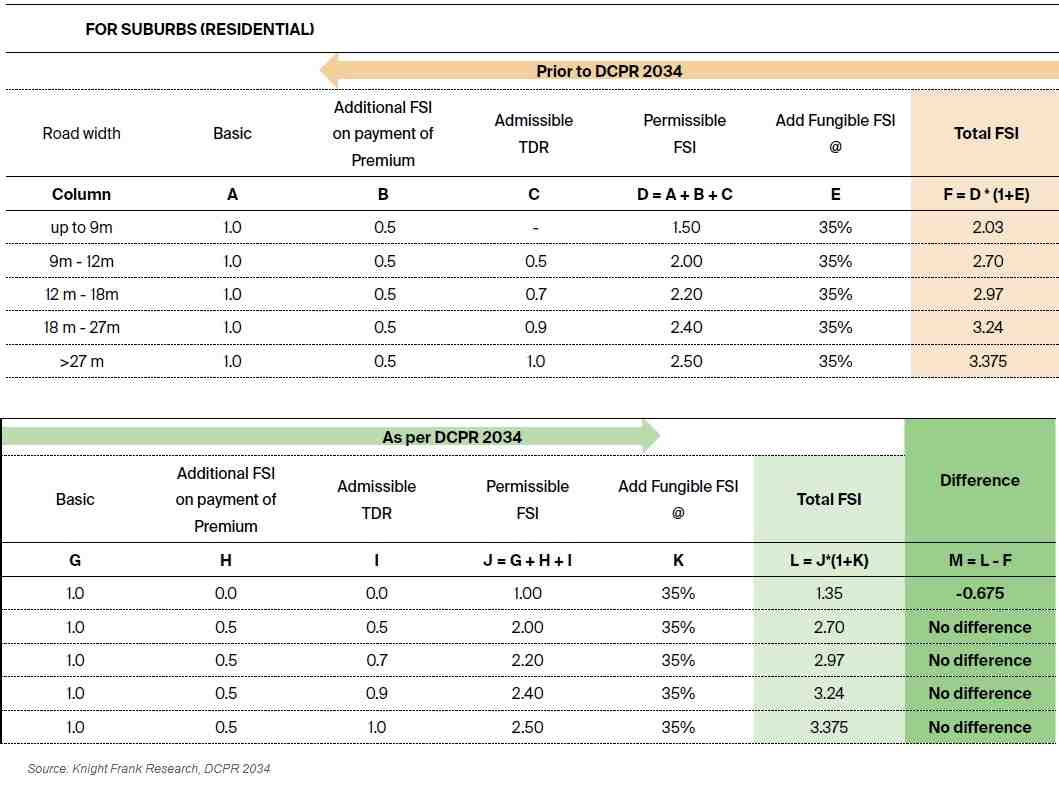[ecis2016.org] The current Development Plan for Mumbai, has several positives and is a step in the right direction, but implementation of some of the objectives may be a challenge, says a report by Knight Frank India, which analyses the pros and cons
As the much-awaited Development Plan (DP) 2034 of Mumbai was unveiled by the state government in May 2018, the ‘Development Control and Promotion Regulation 2034 (DCPR 2034)’ was put up for public suggestions. Now, the Exclusion Plan for the Development Plan 2034 has been cleared and the new DCPR is likely to be be finalised by the end of 2020. Exclusion Plans are the portions of the plan to which the government made changes after it was submitted to the BMC.
You are reading: Mumbai DCPR 2034: Can it solve Mumbai’s real estate problems?
The current version of the development plan took everyone by surprise, as it was significantly different from the Development Plan 2034 (DP 2034) that was passed in February 2018 by the Brihanmumbai Municipal Corporation (BMC). There were many changes/modifications and numerous new additions to the development plan passed by the BMC. The DCPR 2034 came into effect on September 1, 2018. The new DCPR 2034 seeks to open up around 3,700 hectares of land that was earlier designated as no-development zones, for real estate construction.
As this plan will govern and regulate all constructions in the city for the next decade and half, property consultants Knight Frank India, in a report titled ‘DCPR 2034 – Deciphering Mumbai’s Future’, has analysed some of the important aspects of the plan.
During the enforcement of the previous development plan (the 1991 DP), the objective was to address the then problems of the city such as redevelopment of – slums, cessed buildings and Maharashtra Housing and Development Authority (MHADA) colonies, as well as promote/guide the new development of buildings on private land.
Read also : Illegal occupants have no right over government land: Delhi HC
The 1991 DP has been in force for nearly three decades. The policies were revised several times to address the housing problems of people living in slums, cessed buildings and MHADA societies, through redevelopment. If we look at the progress achieved on the redevelopment front, the record has not been very impressive, the report noted.
- Out of the 1.5-1.6 million slum households in Mumbai, approximately only one lakh houses have been built for the slum dwellers.
- There are 19,800 cessed buildings in Mumbai, out of which only around 1,800 have been redeveloped.
- Not much has been achieved on the redevelopment of MHADA societies either.
In Mumbai, around seven million people live in slums, around 2.5 million people live in cessed buildings and around 1.2-1.5 million people live in MHADA colonies. The policies of the 1991 DP were intended to improve the living standards and housing conditions of these people but it has not had any meaningful impact on the lives of the intended beneficiaries. Moreover, today, the situation is quite different from that during the enforcement of the 1991 DP. It is not just slums or MHADA colonies or cessed building that are in desperate need for redevelopment, but private housing societies/buildings need redevelopment, as well.
In Mumbai, within the BMC region, i.e., Dahisar to Churchgate and Mulund to Colaba, there are not many land parcels left and the only way for the city to progress forward is through redevelopment of existing buildings. Hence, the policies need to be framed accordingly so as to promote redevelopment of all stakeholders in a sustainable way, as well as to witness meaningful, on ground changes.
[ecis2016.org] Mumbai Development Plan 2034: An analysis of the pros and cons
DCPR 2034: Key provisions for residential segment
Linking of permissible FSI to road width
- Past policies have been limited in checking congestion, leading to construction of tall residential/ commercial towers, on narrow roads.
- By linking permissible floor space index (FSI) to road width, the DCPR 2034 would ensure that taller buildings can be constructed, only if the road width can support it, thereby, reducing congestion.
Increasing FSI through increase in Transfer of Development Rights (TDR) limits and premium FSI
- The FSI for the island city has been increased in the DCPR 2034. This increase in FSI accrues from increase in FSI on payment of premium and the increase in the quantum of TDR that can be loaded on the plot.
- This would ensure that there is demand for TDR generated through surrendering land for road widening, slum rehabilitation and surrendering of reserved plots.
- Further, the government and the municipal corporation would earn revenues, from selling premium FSI.

Read also : Work on Mumbai Metro-7 corridor to begin post monsoon

Increasing development rights for area surrendered
- The state Urban Development Department in its November 2016 notification, had increased the TDR generated for land surrendered to the BMC due to reservation on the plot. This was increased to 2.5 times the area of land surrendered in the island city and two times the area of land surrendered in the suburbs. Prior to that, the TDR under both was 1. The same regulation has been continued in the DCPR 2034.
- This would ensure that there would be incentives for the stakeholders to expedite the process of slum rehabilitation and surrendering of reserved plots.
Adopting the RERA’s definition of carpet area
- The DCPR 2034 has altered its definition of carpet area from the one defined by the Maharashtra Ownership of Flats Act (MOFA) and has adopted the Real Estate (Regulation and Development) Act, 2016 (RERA’s) definition of carpet area. Aligning to a uniform definition, will help reduce ambiguity amongst buyers.
Slum rehabilitation
- Only one lakh slum units have been rehabilitated over the past 20 years, under the current slum rehabilitation policy. At this pace, it would take approximately 300 years to rehabilitate the 15-16 lakh slum units in Mumbai.
- The inadequacies of the past policy may get carried forward under the current DCPR 2034, as it continues the same norms.
Reduction of consent clause for redevelopment of buildings, in certain categories
- The minimum irrevocable consent required for redevelopment of cessed and MHADA buildings, has been reduced from 70 per cent to 51 per cent.
- Redevelopment of buildings under these categories is stuck, due to other reasons. Hence, reducing the consent may not completely help to address the issue.
DCPR 2034: Key provisions for commercial segment
Minimum road width of 12 metres for higher FSI for commercial
- The DCPR 2034 provides higher FSI for office developments, only if the road width is greater than 12 metres, or else it is same as residential.
- As the number of vehicles moving in and out of a commercial building throughout the day is higher than residential, the incidence of traffic jams outside commercial buildings, can be reduced to some extent.

Increasing FSI for office development
- The DCPR 2034, aims to create eight million jobs in Mumbai, by increasing the supply of office space.
- The FSI given under the DCPR 2034 for commercial development, is higher than residential for road width greater than 12 metres. The additional/higher FSI is aimed at incentivising commercial development, over residential development. This additional FSI (incentive) for commercial development, has to be purchased from the BMC, by paying a premium at the rate of 50 per cent of the Annual Schedule of Rates (ASR).
- However, the current set of incentives in the form of additional FSI, may not sufficiently promote office developments, to the extent required.
Development of smart fintech centres
- Similar to the office development, the DCPR 2034 aims to promote the development of smart fintech centres, by providing additional FSI as incentive. In should be noted that for smart fintech centres, the premium charged for additional FSI is at the rate of 50 per cent of the ASR.
- As per our analysis, while attempting to bring about growth for smart fintech, the DCPR may still face challenges in attaining this objective.
Commenting on the report, Shishir Baijal, chairman and managing director, Knight Frank India said, “With the release of DCPR 2034, the last level of uncertainty has ended. The developer community can now progress with confidence. The policy provides clarity and focus for future development of Mumbai. The DCPR 2034 is a crucial policy, which can shape the future of our city. Hence, it should be given paramount importance.
“The current DCPR 2034 has several positives and is a step in the right direction. However, we believe that there will be areas to work on further. The DCPR 2034 has provided a fillip to the commercial sector in Mumbai, by way of incentivised FSI. However, the high cost of the FSI could be a challenge. On the residential front, measures such as opening up of land for promoting affordable housing and unification of carpet area definition, will prove to be a boon for home buyers.
“All in all, the current DCPR 2034 has something to offer to all stakeholders and we are optimistic that it will have far-reaching implications on Mumbai’s growth, over the next two decades.”
FAQs
What is DCPR?
DCPR stands for Development Control and Promotion Regulation 2034 (DCPR 2034)
What is Mumbai Development Plan 2034?
Mumbai Development Plan 2034 seeks to open up 3,700 hectares of land for construction of residential real estate
Source: https://ecis2016.org/.
Copyright belongs to: ecis2016.org
Source: https://ecis2016.org
Category: Lifestyle





